Glyphosate is everywhere. It’s in our food, our water, our air. We are inundated by it every day, but a major source of its entry into our body is through our food. The concerns surrounding glyphosate in food has peaked since the agricultural giant, Monsanto (now owned by Bayer), lost their Roundup Cancer trial against plaintiff, Dewayne Johnson.
In the first of hundreds of Monsanto Roundup lawsuits to go to trial, a jury concluded that the popular herbicide, Roundup (with main active ingredient, glyphosate), likely caused the plaintiff to develop cancer.
But what does this mean for our food?
Glyphosate in Food: List of Popular Chips Filled with Roundup
Glyphosate isn’t an ingredient you’ll find on the food label. It’s a herbicide applied to the food before processing, so manufacturers don’t have to label it (same goes for just about any herbicide/pesticide).
PepsiCo, the owner of Frito-Lay, has actually spent millions of dollars to fight against consumers’ need to know if they’re eating GMOs (1). Over $8.1 million was contributed by Pepsi to defeat citizens’ ballot initiatives in California ($2,485,400), Washington ($1,620,899), Colorado ($1,650,000), and Oregon ($2,350,000). They also invested $7.23 million on lobbying in 2013 ($3,720,000), and 2014 ($3,510,000).
What is PepsiCo trying so desperately to hide? Perhaps the fact that their food items are bathed in glyphosate, the popular cancer-causing weedkiller. Apparently, quite a lot of money spent by Pepsi trying to fight transparency.
Reports from Food Democracy Now! and The Detox Project, as well as independently-run tests from companies like GMO Free USA, found a variety of popular potato chip brands (mostly owned by PepsiCo – aka. Frito-Lay) that tested positive for glyphosate.
Glyphosate residues found in chip brands are as follows (ppb = parts per billions):
– SunChips: 140 ppb
– Stacy’s Simply Naked Pita Chips: 812.53 ppb
– Lay’s: Kettle Cooked Original: 452.71 ppb
– Doritos: Cool Ranch: 481.27 ppb
– Fritos (Original) (100% Whole Grain): 174.71 ppb
It likely doesn’t stop there. Potatoes, wheat, corn and canola oil are four major ingredients used in the production of chips worldwide. These crops are also some of the most highly sprayed crops out there.
In fact, over 80% of corn grown in the U.S. contains genes from the soil bacterium Bt (Bacillus thuringiensis), which produce insecticidal proteins within the plant (2). So if you’re buying products that contain non-organically produced corn, or if they haven’t been certified as non-GMO by the non-GMO project, they’re likely to contain these proteins.
Animal feeding studies have found that Bt-corn can create significant changes in blood cells that can lead to liver and kidney disease.
One study looked at the correlation between maternal and fetal exposure of glyphosate and its metabolite aminomethyl phosphoric acid (AMPA), and Cry1Ab protein (a Bt toxin) in Eastern Townships of Quebec, Canada. The blood of pregnant and non-pregnant women were evaluated. Bt toxin was found in the blood of pregnant women, their fetuses, and non-pregnant women. Glyphosate was also detected in the blood of non-pregnant women (3).
The report from GMO Free USA that analyzed samples of SunChips found that 100% of the corn in the SunChips was GMO. It contained DNA sequences known to be present in insecticide-producing Bt and Roundup Ready corn. According to GMO Free USA, the “FDA, EPA, and USDA allowed the insecticidal GMO corn discovered in SunChips to be commercialized without ever conducting human safety tests.”
Even organic crops can become contaminated with glyphosate. Herbicide drift from neighboring fields can land on any crop labelled as organic. While the amounts will be considerably lower than conventional crops, it is still something to be aware of. Non-GMO crops can also become contaminated by cross-pollination with GMO crops. A study that examined corn pollen drift over a 10-year period found that under normal circumstances, corn pollen could drift approximately 2.8 miles, causing GMO contamination to Non-GMO crops grown in that range, or even further (4).
Is There Any Safe Level of Glyphosate?
Multiple studies have pointed to the dangers of glyphosate. Monsanto even lost a trial to a man who claimed their products caused his cancer (non-Hodgkin’s lymphoma). Since then, everyone’s been on edge.
A recent study, called The Global Glyphosate Study, looked at the safety (or rather lack thereof), of the primary ingredient found in weed killers like Roundup and similar products. The study looked at the effects of glyphosate, which was classified in 2015 by the World Health Organization as a “probable carcinogen (5).”
The scientists of the study wanted to determine whether the levels of glyphosate set as “safe” by the U.S. Environmental Protection Agency (EPA) are actually safe. Not surprisingly, researchers found that the amounts set as safe levels of glyphosate by the United States government agency are not safe at all, and are linked to microbiome imbalances and damage to DNA (genotoxicity). The study found that glyphosate is particularly unsafe for children.
What’s fishy here is that the EPA banned the toxic weedkiller over 30 years ago, but then reversed its decision based on studies conducted by the chemical industry itself. No bias there, right? In fact, records suggest that Monsanto may have forged its own studies regarding glyphosate safety. They supposedly did so by hiring ghostwriters to conduct “independent research.” Conducting false research shouldn’t be legal, but when it comes to Monsanto, they can just about get away with anything.
Chip Alternatives
You don’t need to be void of chips your entire life just because the popular brands above are filled with glyphosate. The key here is looking for organic brands that use potatoes without glyphosate.
If you’re trying to avoid glyphosate, don’t just look for the Non-GMO Project Verified label. This label only means the product is made without genetically-modified ingredients. It doesn’t mean that the product doesn’t contain glyphosate residues. Many crops are sprayed with glyphosate before harvest to speed up ripening time and to make the crop more profitable. If you’re buying conventional potato chips that aren’t organic, there’s a pretty big chance that they have glyphosate residues.
Here are some companies you can trust when you’re looking for a decent chip to eat:
– Jackson’s Honest
– Lundberg Family Farms Rice Chips
– Flamous Organic Falafel Chips
– Late July Snacks Organic Tortilla Chips
If you have any favorite organic chip brands, made without the use of canola oil, leave a comment below!

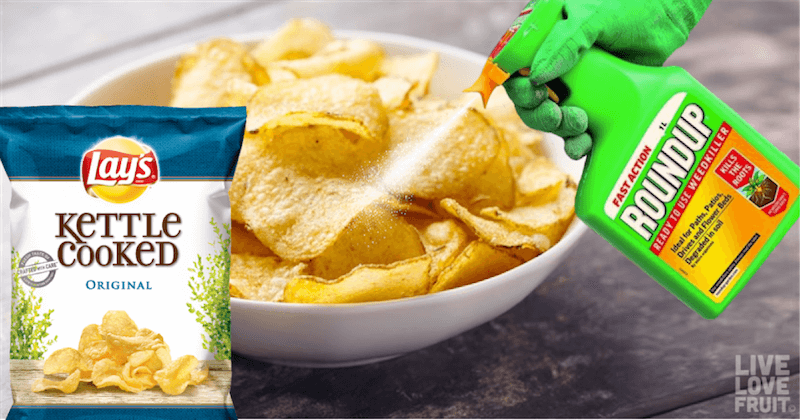
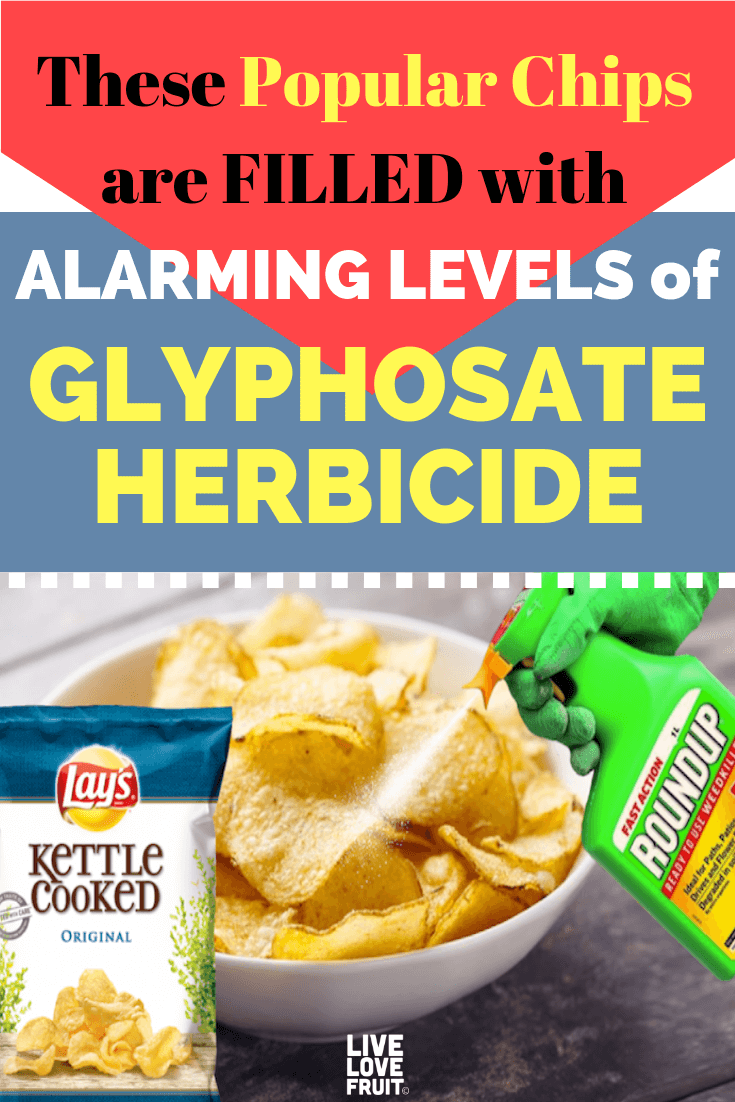
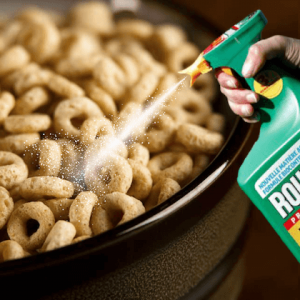



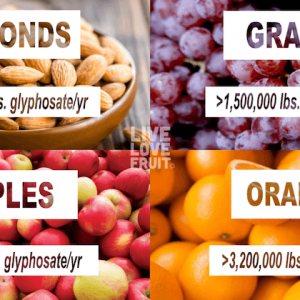

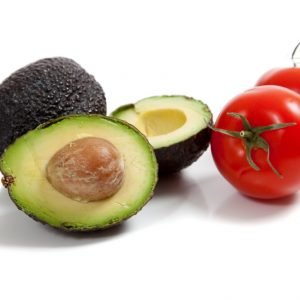
Do you realize that the ads embedded within this article are for commercial farming chemicals, agricultural pesticides and herbicides, and other products that run against the point of the article? These are affiliate ads. If some asshole pro-roundup farmer reads this article, and then clicks and buys through here, essentially this website makes money from his/her purchase.
The definition of irony.
AI robot articles. No integrity.
Hey Erynn – I try to monitor my ads very closely, but considering there are thousands and thousands of advertisers, it is hard to monitor all the time. I work very closely with a great company, and they let me block any ads that don’t align with my blog (that is, if I catch the ad before you guys do). If you could let me know the company (if you remember), I will let my advertising team know and we’ll get them blocked right away. Thank you for bringing this to my attention! I do NOT want to be making money off these companies, they are the bane of my existence, and I cannot express how deeply I despise them.